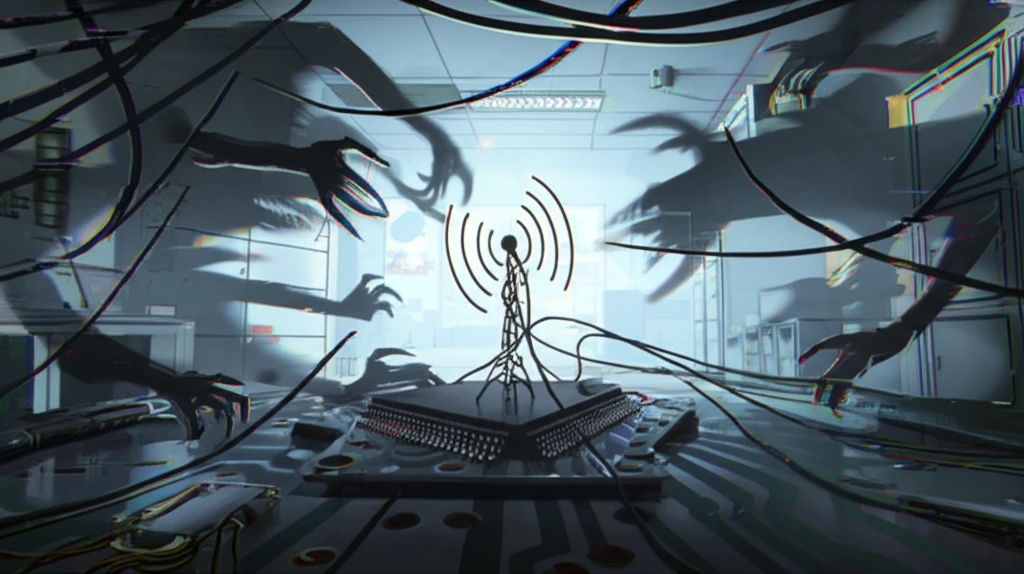
Untangling Antenna Mysteries: How Cable Effects Skew Your Signal Measurements
"Discover the surprising ways cable connections distort antenna measurements and how to achieve precision in your UWB projects."
In 2002, the US-FCC's assignment of the ultrawide band (UWB) for unlicensed use sparked a technological gold rush, captivating both commercial giants and academic researchers. UWB's promise lies in its ability to deliver ultrawide bandwidth, stretching from 3.1 to 10.6 GHz, coupled with low power emission, making it a prime candidate for applications ranging from high-speed communications to advanced radar imaging. However, this vast potential is tempered by significant engineering challenges, particularly in antenna design. Achieving consistent impedance matching, stable gain, uniform radiation patterns, and high radiation efficiency across such a broad spectrum demands innovative solutions from antenna designers.
As the world increasingly demands smaller wireless devices, planar antennas have risen to prominence. Their compact size, low profile, cost-effectiveness, ease of manufacture, and seamless integration with RF circuits make them ideally suited for UWB applications. Among planar antenna designs, the monopole antenna stands out due to its structural simplicity, compact dimensions, and omnidirectional radiation pattern. In practice, a planar monopole antenna requires a ground plane that is electrically large enough to mimic an infinite ground plane, which can dominate the overall size of the antenna. The quest to design compact UWB monopole antennas often leads to minimizing this ground plane.
Designing a planar monopole antenna with a small ground plane to effectively cover the UWB spectrum is an achievable task, facilitated by various techniques. Typically, designers rely on computer simulations to refine their designs. However, in these simulations, the antenna is often directly connected to a signal source, omitting the crucial element of a feeding cable. In real-world testing, a feeding cable becomes necessary to connect the antenna to the measurement system. A small ground plane, however, fails to replicate an infinite ground plane, causing currents to flow back along the outer surface of the feeding cable, leading to secondary radiation. This discrepancy introduces significant differences between simulated and measured antenna performance, creating uncertainties in the antenna's design.
How Do Cables Distort UWB Antenna Measurements?

The quest for precision in antenna design often hits a snag when simulations don't match real-world measurements. Cables, an essential part of any measurement setup, can introduce significant distortions, especially in UWB antennas with small ground planes. The design of antennas is almost exclusively done using computer simulation, where the antenna is directly connected to a signal source, but when the final design is tested, a feeding cable is always needed to connect the antenna to the measurement system.
- Sleeve Baluns: These devices are metal tubes designed to be a quarter-wavelength in length. Although they possess good choking characteristics, sleeve baluns are narrowband devices, making them unsuitable for UWB antennas.
- EMI Suppressant Materials: Covering the feeding cable with an EMI suppressant material can absorb unwanted EM radiation, making it suitable for wideband and high-frequency operations.
Mastering Precision in Antenna Design
Understanding and mitigating the impact of feeding cables, especially in antennas with small ground planes, is crucial for aligning simulation results with real-world performance. Whether employing sleeve baluns or EMI suppressants, or by implementing accurate cable models in simulations, these techniques offer pathways to refine your designs and minimize uncertainties. A comprehensive approach to antenna design involves recognizing these subtleties, enabling engineers to create more reliable and efficient UWB communication systems. As wireless technology advances, attention to these critical details will pave the way for superior performance and innovation.
